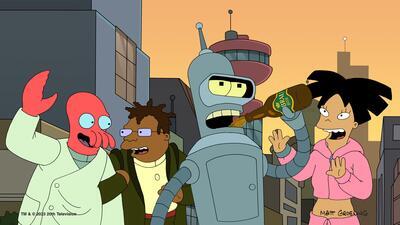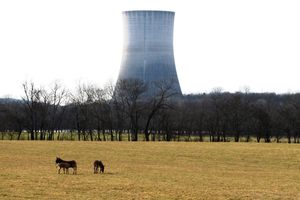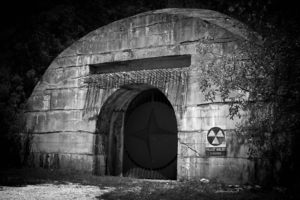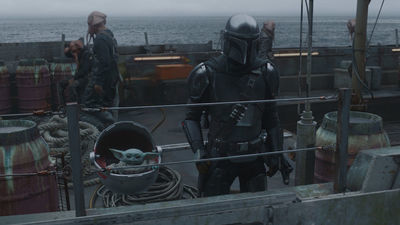PADRE PIO: The Passion According To Abel Ferrara
The argument of separating the artist from the art is something of a cop-out, and to do so, in this case, would be irresponsible and an insult to victims of abuse; Shia LaBeouf and his actions are another knot in a lengthy and tangled web of gendered violence, and while there are no easy answers or solutions, people can invest their time and donate to non-profit sexual assault organizations such as RAINN, (Rape Abuse & Incest National Network), NYSCASA (New York State Coalition Against Sexual Assault), NCADV (National Coalition Against Domestic Violence) and try to raise your sense of awareness to this issue as best you can. And if you engage and support a film with a problematic director and/or star, perhaps make a small donation; if you support the work of an abuser I would recommend that you support those who have been abused.
This idea of divisive controversy is all the more prevalent with Abel Ferrara‘s latest, Padre Pio, a film dedicated to the titular Capuchin Friar, the political strife in post-WWI Italy, and religious anguish, but it’s very much a meta-narrative about Shia LaBeouf‘s redemption arc, whether or not we feel he’s worthy of absolution is another matter.
You could read this as Abel Ferrara enabling LaBeouf , giving him a pass, but it invites us, the viewer, to confront his actions as this film is about the emotional and spiritual inner turmoil of its character without offering an easy way out. This is one of many instances where the narrative blends fact and fiction, past and present; at one point, a cryptic off-screen voice taunts Pio of having his “narcissistic way with countless women.” Rightfully unsubtle, you can’t miss the significance of a line like that. Padre Pio is not quite the glacial ambiguity Ferrara-heads acclimated to with post-2020 outings, Siberia and Zeros and Ones, but an intuitive grappling of anarchic anachronism; there’s this improvisational neo-realist vibe, but it feels like deliberate creative choices.
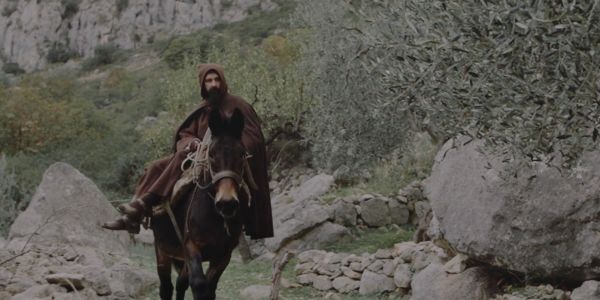
Opening up on a rocky vista, a downtrodden, shaggy-dog Friar, Padre Pio, also known as Francesco Forgione, ride through an impossibly rocky and inhospitable landscape. Meanwhile, battered soldiers returning from the war are broken, bandaged, and amputated; there’s despair and uncertainty. The postwar climate, paired with the arrival of the Padre on the eve of the first free elections incite a wave of upset in the community; there was talk of socialism, communism, and labor reform, and names like Marx and Engels are thrown around; looming shadow of fascism is lurking around the corners as partisans labor and discuss a brighter future for their country.
Padre Pio leans into its politics and historical fealty; the spiritual aspects are heady, abstract, and dense; this is normally putty in Ferrara‘s hands, but there’s an obstruction that keeps the film at a distance.
Spiritual Confinement
Padre Pio hits a hard vein of interiority à la Robert Bresson or Paul Schrader. The film is at its best when it’s LaBeouf in a room, arguing with unseen forces, maybe demons or even the devil perhaps. It might feel stagey, but it harkens back to the soul-purging desirous longing that burns through Harvey Keitel in Bad Lieutenant or James Russo in Dangerous Game.
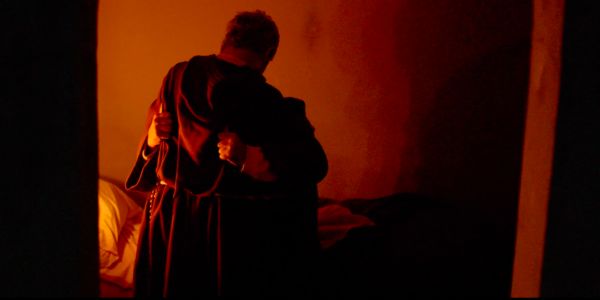
The screen crackles with candlelit atmosphere and loaded energy when confronting the almighty or spiritually disturbed locals all the while contending with the unrelentingly deafening silence of god. Ferrara knows how to channel sublime ardor and get some magnificent performances from forceful actors, and he and LaBeouf click with some genuinely inspiring energy. Sure, there’s the requisite level of his intense-guy performance, but he goes beyond the chest-pumping, eye-watering, spitting flare-ups and invests himself in some engaging areas of restraint.
Even when the film is working at its full potential, it’s still partially sabotaged by this insistence on gummy digital cinematography and greasy slow-motion sequences that disengage us from potentially invigorating spurts of visual bravado. Earlier instances of voracious digital mise-en-scéne are evident in his previous titles (especially, Zeros and Ones), and the film brandishes some brawny scenic chops thanks to DP Alessandro Abate, whose photography in the 2019’s Martin Eden is easily some of the best I’ve seen in recent years.
Fertility of Faith
The film falters hardest when it reveals how bifurcated it is as the narrative traipses from the mainline into the B-story of postwar Italian politics. It’s a fertile topic of historical intrigue, but in Padre Pio, the scrambling partisans standing up against authoritarian tyranny, padrone baddies, and spouting Marxist rhetoric is sincere. Still, there’s dramatic flaccidity when it held up against the deviant spiritualism, catholic angst, and religious exhibitionism with which Ferrara is so identified.
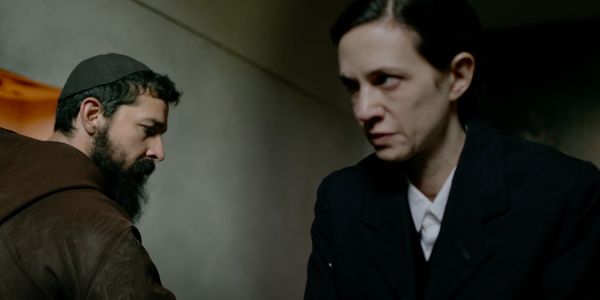
The director is no stranger to this territory; the confrontational, punk aesthetic where New York civic history, police corruption, and urban development are the backdrop for crime and horror films that are just as hard-nosed in their realism as they are fantastic. Stories where gangsters are also benevolent developers, degenerate gambler-junkie cops perspire for redemption, strung-out catholicism, and proletariat reverie are the stuff of Ferrara‘s cinema. “But you want a miracle? He built a fuckin’ $35 million hospital. You ride into the poorest place on a donkey, and 25 years later, you build a $35 million hospital? There’s your fuckin’ miracle right there,” or that Padre Pio’s “statue is in every drug dealer’s place, I’ve been at.” To me, it sounds like the revered saint has more in common with Frank White (Walken‘s character from King of New York) than Shia LaBeouf.
There’s striking imagery and moments that show the director’s affinity for the earthy, bawdy stylings of transgressive provocateur Pier Paolo Pasolini, someone with whom the director is more than familiar. Originally his 2014 film Pasolini (with Willem Dafoe, a dead ringer for the role) was slated to star the late Zoë Lund, star of Ms. 45 and collaborator of the director whose relationship was stormy at best. This gender inversion is referenced in one of Padre Pio’s most daring scenes.
Daring but Flawed
But there’s an awkward staleness in the interchanging narratives, and it can’t help but make one wonder, maybe the shooting schedules didn’t align, or they only had so much time to shoot with LaBeouf , and the rest of the film is padding. We drift from a handful of familiar faces, and we don’t settle on any of these anonymous freedom fighters and martyrs to make any connection; it’s another buffer between us and the film, blocking us from identifying with the characters and story.
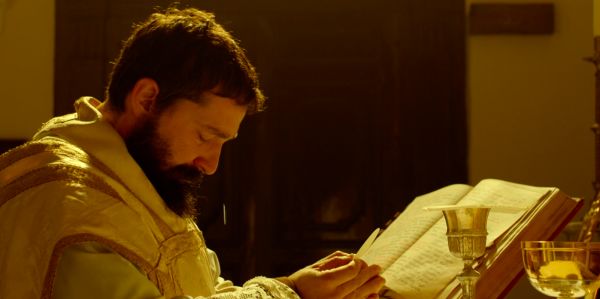
A memorable juncture arrives in this transgressive artful segue where Ferrara regular, Asia Argento playing a character credited as “Tall Man,” plainly admits that he is aroused by his adolescent daughter and her “changing body” Yikes. It’s a charged moment that invites a bevy of interpretations. Perhaps this is an adjacent reference to Argento‘s own sex scandal from a few years ago?
Wrapping Up
Abel Ferrara’s artistic growth is a narrative deserving of its own movie, and his post-2000 body of work is a dizzying array of contrasting features that are wholly unique but artistically consistent, invigorating works. Tommaso signaled a new sojourn in his filmography then Siberia and Zeros and Ones showed us that he could defy gravity. Unfortunately, Padre Pio isn’t an extension of this uptick in artistic brilliance but, hopefully, a slight deviation partnered, hopefully with an inevitable return to form. Replete with bold catholic imagery and painful moments of confrontational longing that recalls Ferrara‘s best work but Padre Pio is a few rosaries short of a blessing.
Padre Pio was released in theaters in the United States on June 2nd, 2023.
Watch Padre Pio
Does content like this matter to you?
Become a Member and support film journalism. Unlock access to all of Film Inquiry`s great articles. Join a community of like-minded readers who are passionate about cinema – get access to our private members Network, give back to independent filmmakers, and more.
Join now!
